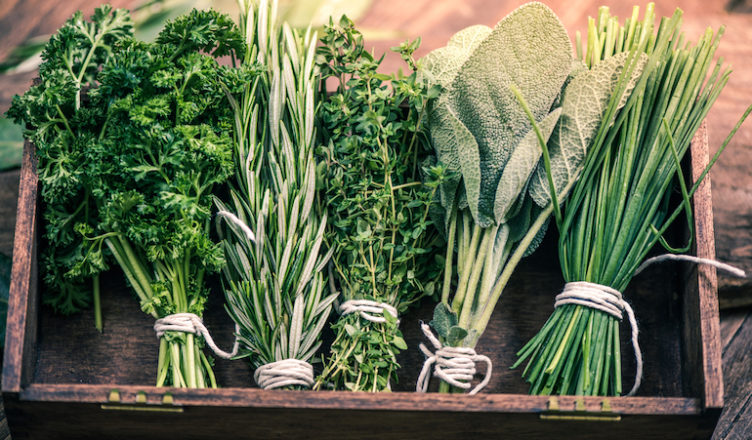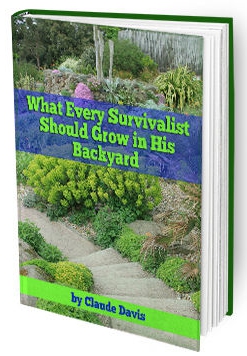Growing your own herbs is an easy and rewarding project .
Herbs are easy to grow in beds, borders, containers, or on windowsills. And with our full range of seeds and plants, it’s quite possible to have a year-round harvest, saving you money you might otherwise spend on expensive supermarket produce. Here’s our easy guide to growing your own herbs.
Annual or Perennial?
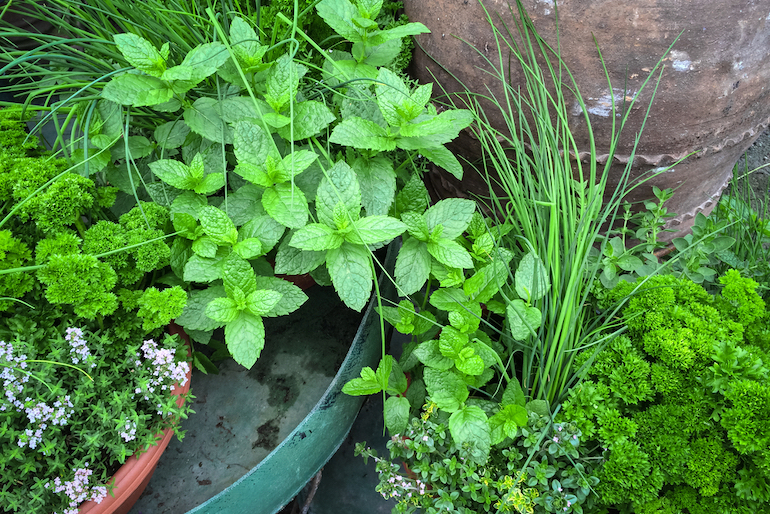
Herbs are simple to grow and there are varieties to suit any type of garden .
Annual and biennial herbs like basil, coriander, parsley, dill, and chervil are fast growing and best sown at intervals throughout the spring and summer so you’re guaranteed a continuous fresh supply. Perennial herbs like oregano, mint, thyme, sage, rosemary and chives are slower growing and need a more permanent home.
Check out the table below to give you an idea of what’s available.
| Annual and Biennial Herbs | Perennial Herbs |
|---|---|
| Basil | Oregano |
| Coriander | Mint |
| Parsley | Thyme |
| Dill | Sage |
| Chervil | Rosemary |
| Chamomile | Chives |
| Summer Savory | Comfrey |
| Marjoram (sweet) | Sorrel |
| Purslane | Fennel |
| Borage | Russian Tarragon |
| Lemon Grass | Hyssop |
| Lovage | Lemon Balm |
| Mexican Marigold (Sweet Mace) | Meadowsweet |
| Rocket | Horseradish |
Growing herbs outside
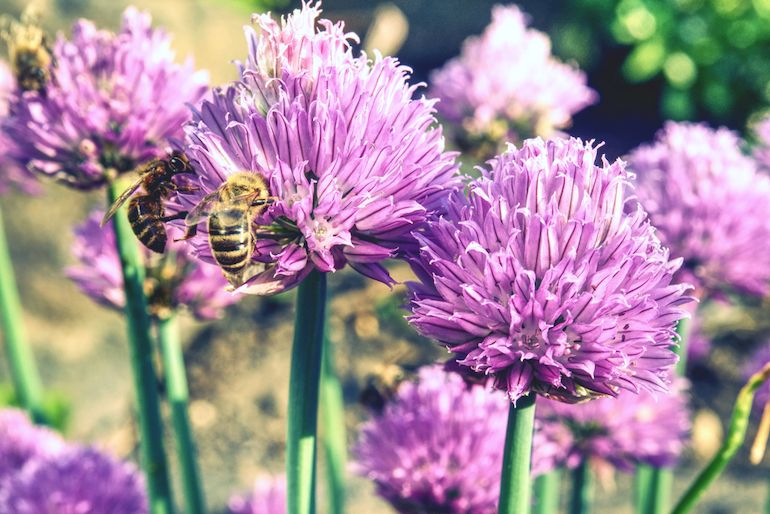
Many herbs, like chives, look as good as they taste .
Try growing herbs outside in a dedicated herb garden, a raised bed, a vegetable plot or even among the flowers in your borders – the array of different foliage and flower colours available means many herbs are as decorative as they are delicious and medicinal.
Ideally herbs like a sunny, sheltered location with well-drained soil. If you have heavy clay soil then incorporate some coarse grit and organic matter like well-rotted manure or compost to improve drainage. You may also benefit from growing your herbs in a raised bed to ensure sharp drainage.

Many herbs will tolerate a slightly acid soil, but the best pH-level for growing herbs is neutral to alkaline. If you have very acid soil, add some lime when preparing the planting area. Many herbs like rosemary, sage, thyme and lavender grow particularly well in coastal gardens.
Shady garden? Herbs that grow in moist, shady conditions include chervil, parsley, meadowsweet, mint, lemon balm, and chives.
When to plant outdoor herbs
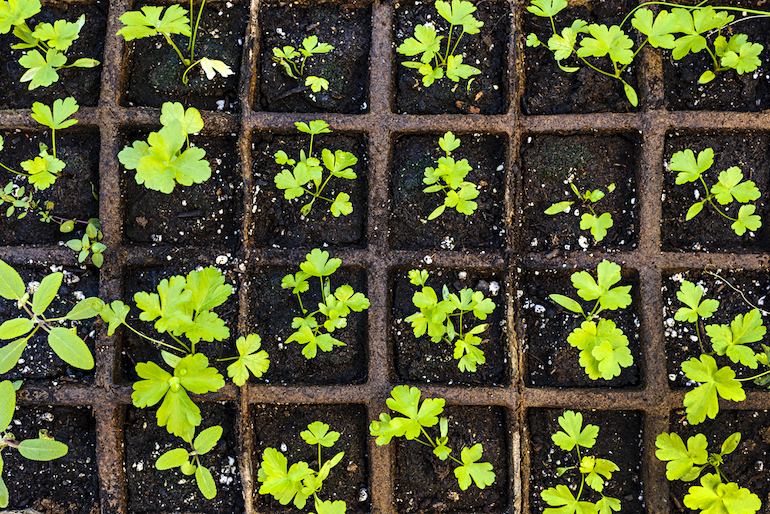
Start herbs off under cover to protect them until the weather is warmer .
Sow hardy annual or biennial herbs like parsley, coriander, dill, and chamomile from March until August, directly into their final positions. This is especially important for chervil and dill because they’re difficult to transplant. Sow at intervals of three to four weeks to ensure a continuous supply of fresh leaves.
Alternatively, sow most of your herbs under cover in seed trays or modules and plant them out at a later date, according to the instructions on individual seed packets. You can prick out seedlings and grow them on before hardening them off. Plant them out only when all risk of frost has passed. You may find half-hardy basil performs well indoors on a sunny windowsill if the summer is particularly wet or cold.
Sow perennial herbs like sage, rosemary, chives and fennel in the spring, under cover in the warmth, and then pot them on when they’re big enough to handle. Harden off plants in a cold frame before planting into their final positions.
Where to plant outdoor herbs
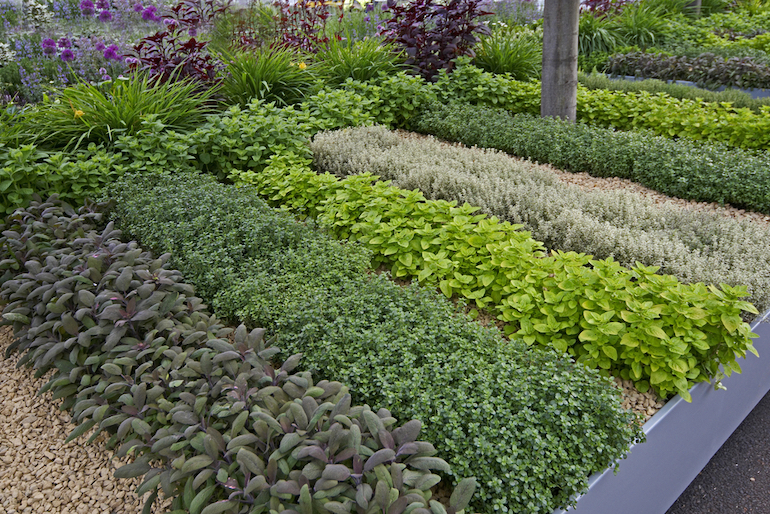
If you have the space, a dedicated herb garden looks and smells great .
Growing herbs outdoors in a dedicated herb garden makes harvesting easier and creates a heady scent on hot sunny days. And combining the silver-grey foliage of sage with the blue flowers of borage or the orange flowers of calendula (pot marigold) creates a fragrant ornamental feature made entirely from edible flowers.
If you don’t have the space for a dedicated herb garden, they also make a great addition to flower beds and borders. Go for herbs that contrast with your flowers, and those, like thyme and basil, whose leaves add extra depth and texture to your planting.
For an informal edge to your garden path, try low-growing herbs like chives and thyme. You can also plant thyme and creeping savory in the gaps between paving stones – these tough plants will withstand light foot traffic, releasing their delicious scent whenever someone steps on them.
The tall, feathery foliage of fennel looks great in a herbaceous border, and its yellow flowers are sure to attract to bees and butterflies to your garden.
Sow the herbs you use most directly into the soil between rows of veggies, or as edging to beds. Sown in late summer, herbs like coriander, parsley and chervil will continue to grow throughout the winter as long as you protect them with a cloche.
Growing herbs in pots and containers
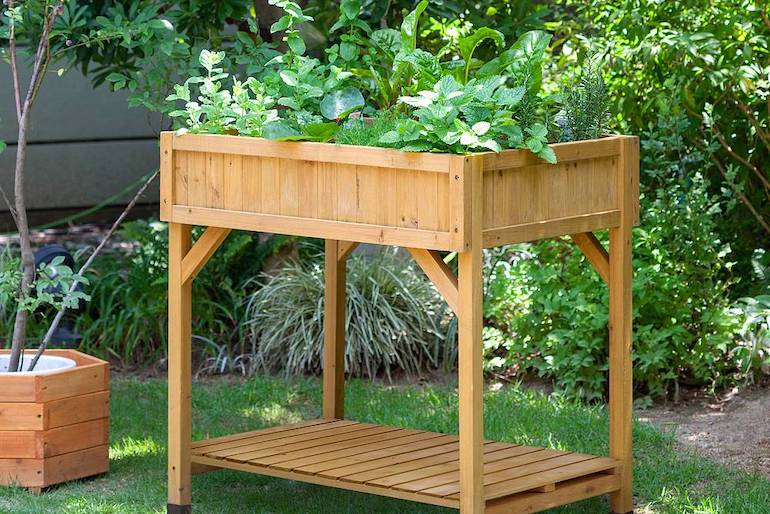
Growing herbs in pots and containers can be just as productive as planting them in beds .
Growing herbs in pots and containers is a great way to grow fresh produce in smaller spaces. Go for a purpose-made vegetable trug which you can position right outside your back door, on your patio, or even on your balcony. Alternatively, choose relatively deep pots, especially for large shrubby herbs like bay trees and rosemary.
The best compost to grow herbs in is loam-based, like John Innes. Feed your pot-grown herbs regularly with a balanced fertiliser throughout the growing season, following the manufacturer’s instructions. Over-feeding can cause the leaves to lose their pungent flavour so don’t be too generous.
Make sure your containers have adequate drainage holes and are raised on bricks or ‘pot feet’ to prevent water logging in the winter. It’s also worth protecting pots in severe icy weather by placing them against a house wall and/or wrapping the pot in bubble wrap.
Some herbs like mint and Sweet Woodruff can be invasive making it a good idea to grow them in sunken containers like old buckets or plastic pots, to restrict root growth. Make sure the container has drainage holes or water logging will kill the plant, and bury it so the top is hidden under a thin layer of soil. When growing mint in a container, lift and divide the plant yearly to maintain health and vigour.
Repotting herbs
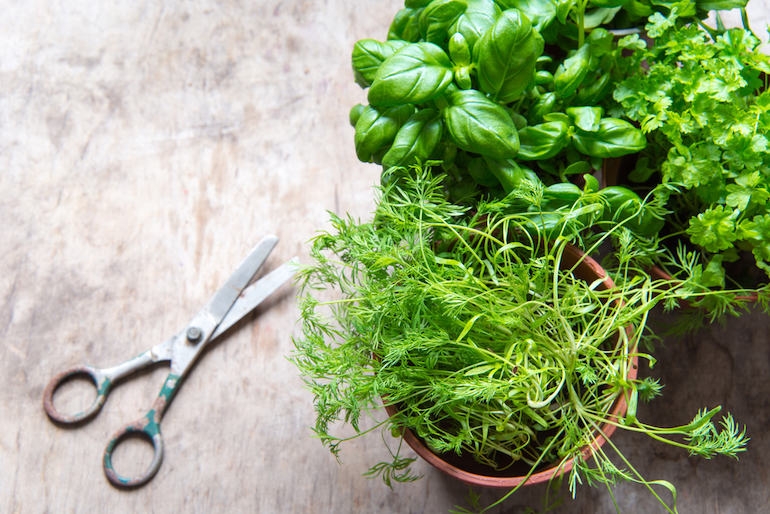
Repotting pot-bound herbs will mean you’ll get a fresh supply for longer .
Should your container-grown herbs start to look weak and begin to dry out quickly, it’s a sure sign the plant is pot-bound and needs a new home. Lift the plant and tease apart the roots, removing as much of the old compost as possible before replanting in fresh compost in a bigger pot.
If repotting isn’t an option, replace the top inch (2.5cm) of soil with fresh compost and a slow-release fertiliser. Well-rotted manure also makes a good top-dressing.
Growing herbs indoors
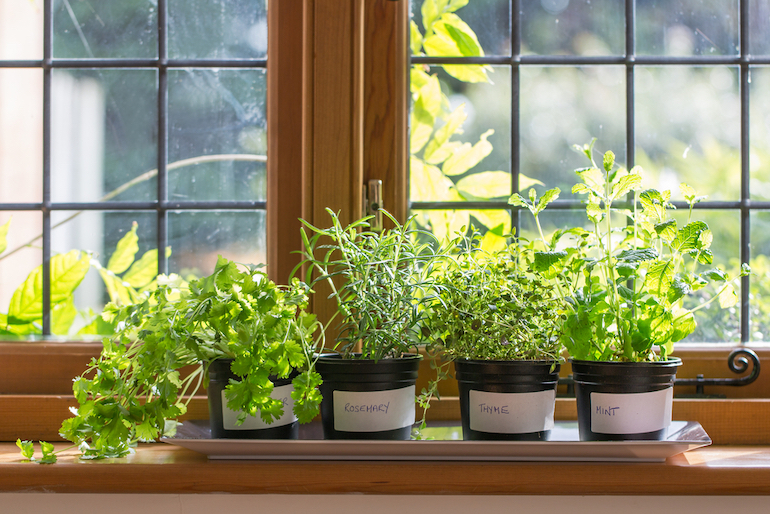
It’s easy to grow herbs indoors if you haven’t got an outside growing space .
Growing herbs indoors makes harvesting easy and is a great idea if you don’t have a garden or balcony. It also extends the season for annual herbs so you’ll have fresh produce all year round.
Suitable herbs to grow indoors on the windowsill include chives, parsley, basil, coriander, marjoram, dill and mint. You can treat windowsill herbs as cut-and-come-again crops, harvesting regularly to encourage new growth.
To grow mint indoors in a pot, sow the seeds onto the surface of damp, free-draining seed compost and sprinkle lightly with vermiculite. Cover the container with a clear plastic bag or piece of glass and place somewhere bright and warm for the seeds to germinate (about 18-20C). Once germinated remove the cover and grow on.
Some herbs growing outside can be lifted, divided and brought indoors for the winter. Chives and mint are ideal for this technique. Simply lift the plants in autumn and divide the clumps into smaller pieces. Plant up the divided pieces into pots of ordinary multipurpose compost, water well and cut back the top growth to leave about 10 cm to regrow.
Harvesting herbs
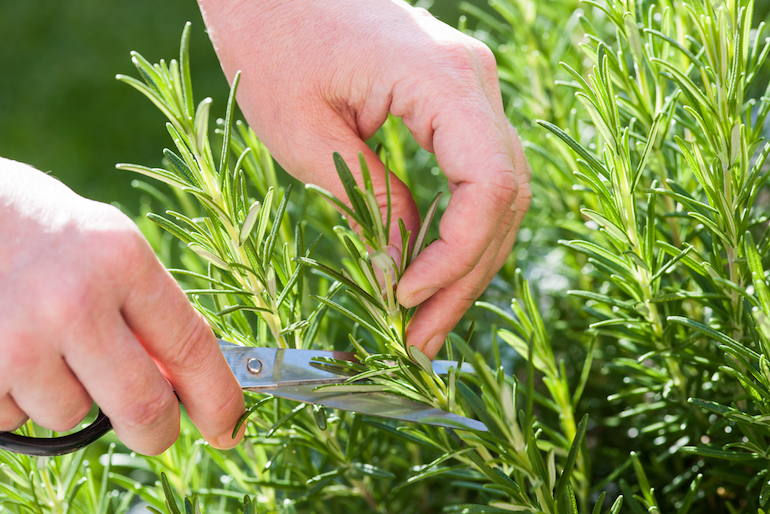
Enjoy the fruits of your labour .
When harvesting herbs, remove foliage from the outside of the plant, allowing new leaves to develop in the centre, and don’t pick more than a third of the foliage at a time to enable the plant to recover.
Herbs are excellent for freezing, enabling you to enjoy their flavours all year round. This is especially useful for fast-growing herbs like coriander, parsley and dill, and can help you resolve a glut. Either freeze whole sprigs in freezer bags or freeze chopped herbs with water in ice cube trays.
Herbs are best harvested in the morning before any essential oils evaporate. You can harvest outdoor evergreen herbs like rosemary, sage and thyme sparingly all year round, but be aware that no new growth will occur until spring.
Top tips for looking after herbs
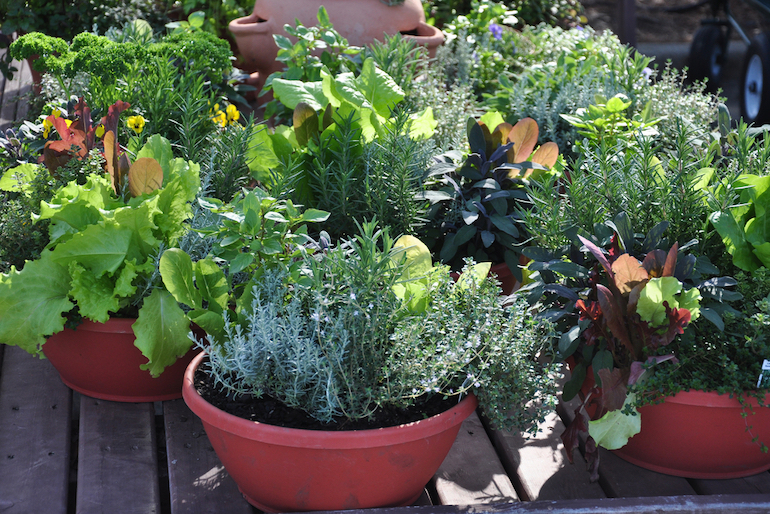
Herbs grown in pots and containers require more care .
Herbs are relatively low maintenance unless you’re growing them in containers, in which case they require routine watering and feeding. Trimming herbs in the spring encourages a flush of new healthy leaves, and it’s also best to deadhead your herbs as the flowers start to fade to channel their energy into leaf growth.
In the autumn it’s best to leave any dead foliage on the plant to help protect it during the winter, but do make sure you clear any debris and fallen leaves off low-growing herbs like thyme and lavender to prevent fungal diseases. It isn’t necessary to mulch your herbs, with the exception of mint which prefers moist growing conditions.
Herbs are some of the easiest plants to grow and transform your efforts in the kitchen. If you grow from seed, you can choose unusual and interesting flavours that aren’t readily available on supermarket shelves. Why not give them a go this year?
source : Sue Sanderson

